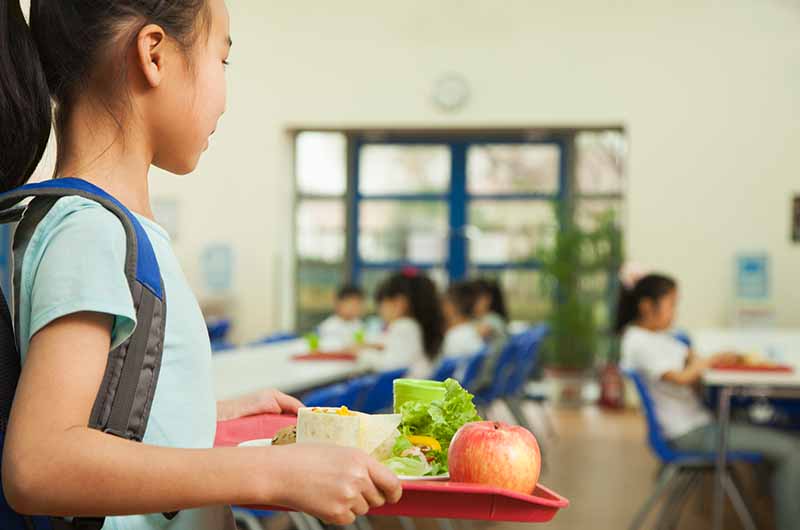Less salt leads the changes in school lunches

What will school lunches be like this fall? Less salty, for one thing.
Sodium content will decrease by 10% in school lunches in 2023-24 as part of a decade-long effort to make the noontime meal for kids healthier. The new standard from the U.S. Department of Agriculture complements the USDA’s proposed rule that at least 50% of the grains served to schoolchildren are whole grains, which are naturally low in sodium.
Good nutrition is crucial for a better learning experience. Lowering salt levels is part of that.
"You really don't need to do a study showing that if kids are hungry, they're going to have a harder time in class," says Marlene Schwartz, director of the UConn Rudd Center for Food Policy and Health in Hartford, Connecticut. “If you can ensure that school lunches are healthy, you are affecting nearly 30 million children every single school day. So, it's a very powerful way of having a very big influence on the dietary quality for children."
Research shows some children consume up to half their daily calories at school, and choices there may affect what they eat elsewhere.
"I think if we can get kids used to lower-sodium and whole-grain products early through school, then that's just going to make it easier for those products to be appealing in their lives in general,” Schwartz says.
To understand the changes, a little history helps.
As those who went to school in the 1970s, '80s or '90s might recall, "school lunches weren't great," Schwartz says. "They did have to meet some nutrition standards. But those nutrition standards were much more focused on having enough calories. They weren't as focused on setting limits."
In 2012, Department of Agriculture rules were revamped to align school lunch policies with the Dietary Guidelines for Americans. That led to students getting more fruits, vegetables and whole grains and lower amounts of fat, calories, sugar and sodium, says Megan Lott, deputy director of healthy eating research at the Duke Global Health Institute in Durham, North Carolina.
Research shows the change has made a difference. A 2021 study in JAMA Network Open found that the food kids ate at school was overall the healthiest food they ate all day.
Since 2012, schools also have made changes to give students more choice in what they eat. Lott says that's a helpful strategy for helping kids make good choices no matter who makes their meals. "Giving them some control over the situation is one of the most important things you can do," she says.
That's not to say you should let them choose between broccoli and brownies, says Lott, who helped write a detailed 2021 report on promoting healthy eating in young children. Rather, she suggests offering them choices within the healthy categories along the lines of asking whether they'd prefer their broccoli steamed or roasted, or if they'd prefer grapes to an orange.
Schwartz agrees that offering healthy choices is effective. "The best nutrition education happens on your plate. If it's healthy and it tastes good, then that's really all you need."





